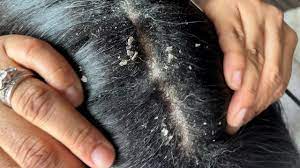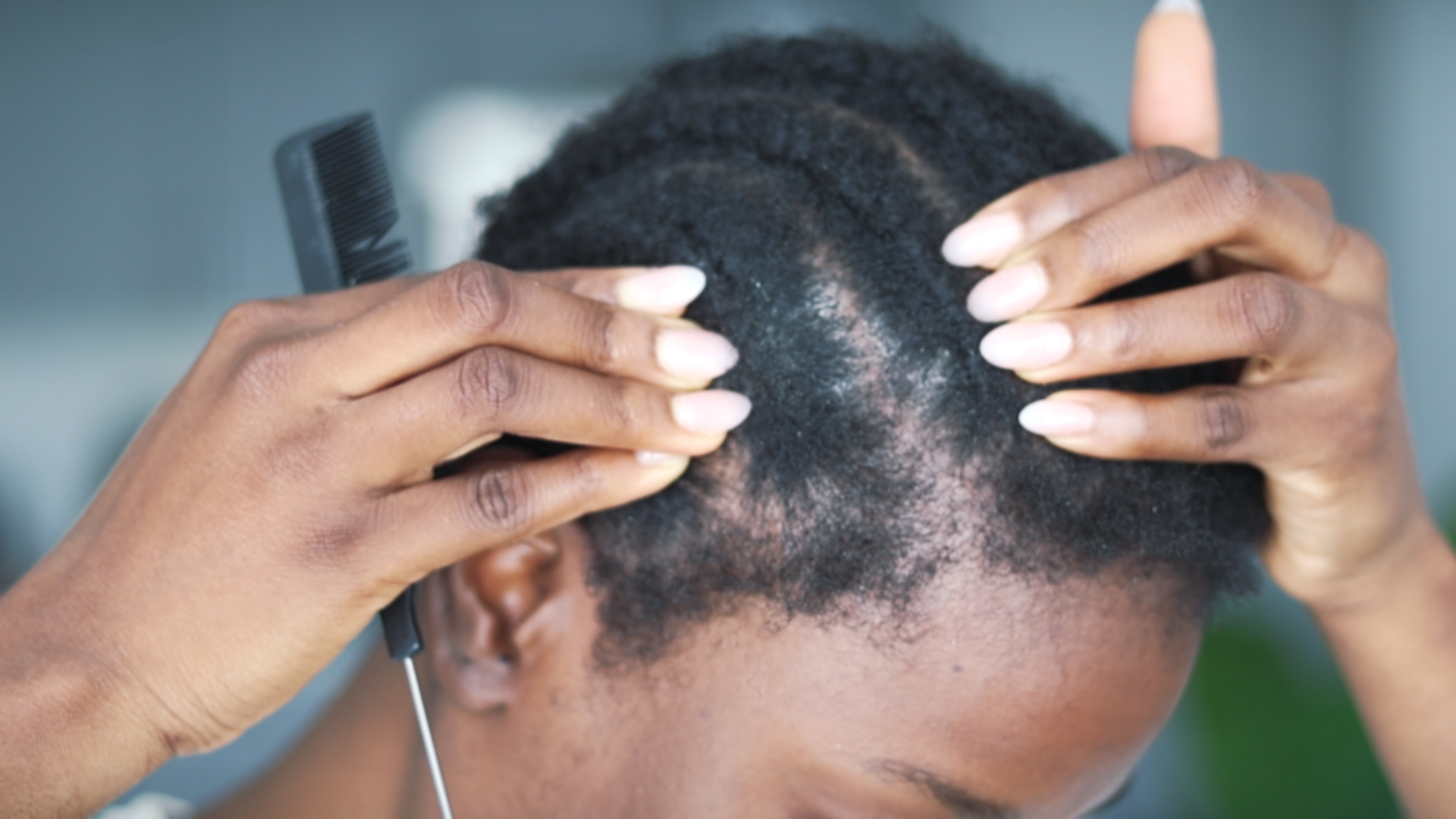Dry Scalp Treatment: Understanding and Solutions
Say Goodbye to Dry Scalp: Proven Solutions for a Healthy, Itch-Free Scalp!
Table of Content
I. Introduction
II. Is it Dandruff?
– Dandruff vs Dry scalp
III. Common Causes of Dry Scalp
– TEWL (Transepidermal Water Loss)
– Shampoo and Hair Products
– Weather and Hard Water
– Dry/Dehydrated Skin
– Skin Conditions
– Low Porosity Hair
IV. Treating Dry Scalp
– Consult a Dermatologist
– Proper Hair Care
– Humidifier
– Hairstyles
– Additional Tips
V. Conclusion
Please note that while this blog post provides general information on dry scalp and its treatment, it’s essential to consult a dermatologist for personalized advice if you are experiencing persistent scalp issues.

Introduction
Dry scalp is a condition that is often misunderstood and under-discussed.
If you are experiencing an itchy scalp, tiny white flakes that disappear when you moisturize but reappear once your scalp is dry, or a general feeling of discomfort on your head, you may assume that you have dandruff. However, there is a chance that you might be experiencing dry scalp, which is a condition that is often misunderstood and under-discussed. In this blog post, we will delve into what a dry scalp is, its causes, and effective treatments.
Is it Dandruff?
Dandruff vs Dry scalp
Distinguishing between dandruff and dry scalp is crucial because the treatments differ significantly. Dandruff presents as oily, yellowish flakes due to an overgrowth of yeast on the scalp. On the other hand, dry scalp results from a lack of moisture and can manifest as tiny white flakes that seem to vanish temporarily when you moisturize your hair.
Common Causes of Dry Scalp
Various factors can contribute to the development of a dry scalp. Let’s examine them:
1. TEWL (Transepidermal Water Loss)
TEWL occurs when the skin loses moisture more than it can retain. Imagine water evaporating from your skin. Your scalp can experience TEWL due to barrier damage.
Damage to the skin’s protective barrier can result from the use of harsh hair products, exposure to heat, tight hairstyles, weaves or wigs, and chemicals. This damage can make your scalp more susceptible to dryness.
2. Shampoo and Hair Products
Sulfates and fragrances in shampoos can irritate the scalp, especially if you have a sensitive scalp. Avoid sulfates (sodium lauryl sulfates and sodium laureth sulfates) in shampoo.
3. Weather and Hard Water
Dry weather (like the winter season in Canada) or hard water can exacerbate scalp dryness. The humidity in the air plays a key role. If you live in an urban city and shower with hard water, consider getting a shower filter.
4. Dry/Dehydrated Skin
Individuals with naturally dry skin or dehydrated skin, are more prone to dry scalp. Both skin and scalp need adequate water and oils. Lack of sebum not only deprives the scalp of moisture but the hair shaft as well, leaving ends feeling and looking dull and rough.
5. Skin Conditions
Eczema, psoriasis, contact dermatitis and in rare cases, skin cancer, can lead to dryness, itch and flaking of the scalp. So it’s essential to monitor any unusual changes.
6. Low Porosity Hair
Certain hair types are more prone to dryness. For example, thick coily natural type 4 hair with low porosity has a higher chance of developing a dry scalp compared to thin natural type 3 hair with high porosity.
Treating Dry Scalp
Effective treatment for dry scalp involves a combination of strategies:
1. Consult a Dermatologist
If possible, consult a dermatologist to determine the exact cause of your dry scalp and receive personalized treatment recommendations.
2. Proper Hair Care
-
- Wash your hair at least twice a month using a gentle, sulfate-free, fragrance-free shampoo. Anti-dandruff shampoos can be helpful but apply them directly to your scalp to prevent further drying of your hair.
-
- More than 30 minutes of shower wash time is not recommended. Also, avoid using hot water, lukewarm water is ideal.
-
- Before shampooing, consider a pre-shampoo scalp treatment.
-
- Apply a moisturizer within five minutes after washing your hair, to seal in moisture. Go for products with occlusives moisturizer and humectants.
-
- After washing hair, layer your products following this order; scalp oils, leave-in conditioner, and butter. Here is an easy-to-make DIY hair oil.
3. Humidifier
Use a humidifier in your home to add moisture to the air, which can help prevent your scalp from drying out, especially at night while you’re in bed.
4. Hairstyles
Opt for hairstyles that allow easy access to your scalp for daily moisturizing. Cornrows, clip-in extensions, braids, headband wigs, and v-part wigs are some styles to consider.
If you can, avoid going to bed with wigs on, your scalp needs air to avoid yeast going there. Sleep with a satin scarf or bonnet. A silk pillowcase also works.
Additional Tips
-
- Consider specialized after-swim shampoos to protect your scalp from chlorine and impurities in pool water.
-
- Be gentle when caring for your hair and scalp. Avoid excessive scrubbing or scratching.
Conclusion
Now that you understand the difference between dandruff and a dry scalp and you’re equipped with strategies for managing a dry scalp, you can take the necessary steps to keep your scalp healthy and comfortable. Remember that every individual’s scalp is unique, and what works for one person may not work for another. Don’t be afraid to experiment with different strategies and products until you find what works best for you. Don’t forget to share your experiences and tips in the comments below, as they can be valuable for others dealing with dry scalps too. Please note that while this blog post provides general information on dry scalp and its treatment, it’s essential to consult a dermatologist for personalized advice if you are experiencing persistent scalp issues.
Please note that while this blog post provides general information on dry scalp and its treatment, it’s essential to consult a dermatologist for personalized advice if you are experiencing persistent scalp issues.
Craft a captivating title for this section to attract your audience.
Add a Heading to Auto-populate Your Table of Contents
Add your section titles using H3, H4, H5, or H6 Headings to automatically populate your table of contents. Avoid using H1 or H2 Headings for better results. H1 Headings should be use for the page’s main title and should only be used once. H2 Headings are commonly used for section titles, to break out the page in sections. H3, H4, H5, and H6 Headings help create a hierarchical structure within the content of a page. This structure helps users navigate through your page.


